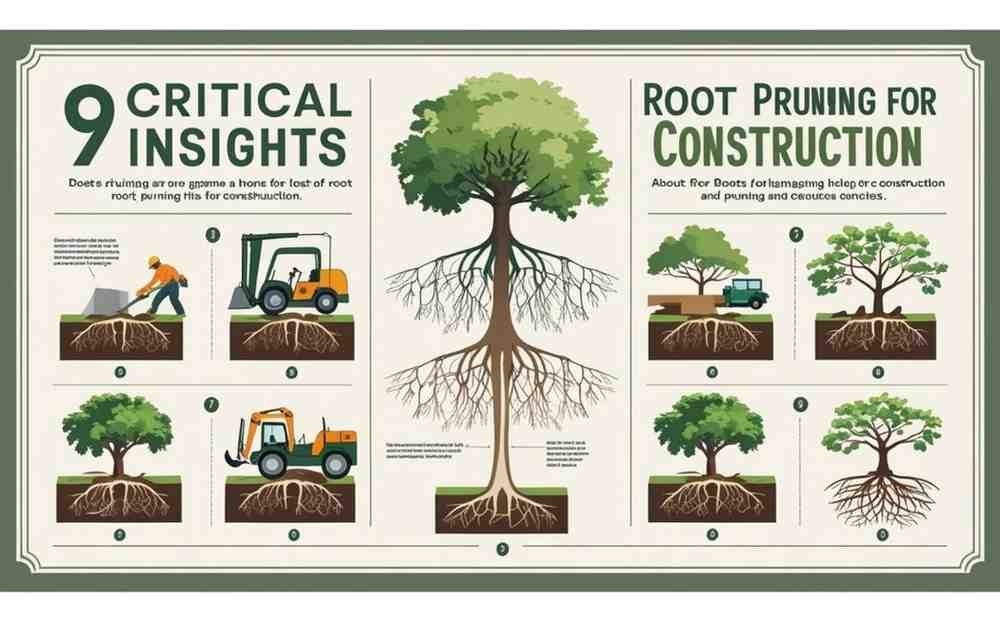Ever seen a tree next to a shiny new building and thought, “How’d they save that?” That’s where root pruning comes in. Not glamorous. Not loud like jackhammers. But crucial. It’s that quiet process happening before construction crews go full throttle. Builders usually overlook it. Or worse, ignore it altogether. But root pruning protects both the tree and your structure. Without it, things shift—literally. Foundations crack, sidewalks buckle, and trees die slow deaths. Not a fun sight. So before the digging starts, root pruning sets the tone for everything else. It’s not just snipping; it’s strategic survival.
What Exactly Is Root Pruning?
Root pruning, in plain words, is the careful cutting of tree roots to prep for construction. Why? Because roots don’t like surprise guests. When you start tearing up soil for a basement, driveway, or even fence posts, roots get damaged. And damaged roots mean unstable trees. That’s dangerous. Not just for the tree, but for your investment. Root pruning creates clean wounds so trees can heal. It also helps avoid future conflicts between roots and structures. Think of it like tree surgery, but in the dirt. Done right, it’s surgical. Done wrong? It’s a slow execution.
Why Root Pruning Isn’t Optional Anymore
Used to be, we just built stuff. Trees were either bulldozed or left to fend for themselves. But now, with urban canopies valued more than ever, root pruning is a non-negotiable. Cities are waking up. Homeowners too. Construction near tree roots without root pruning? That’s asking for lawsuits, property damage, and tree loss. Modern ordinances often require root pruning before you dig within a certain radius of mature trees. So, if you’re thinking it’s optional, think again. It’s code, it’s smart, and honestly—it’s the least we can do. Trees aren’t the enemy. Poor planning is.
When’s the Right Time for Root Pruning?
Timing is everything in root pruning. Do it too late, and you’ll stress the tree mid-construction chaos. Too early, and the wound may close up before work begins. The sweet spot? Usually a few weeks to a few months before major digging. That gives the tree time to adapt. The best time to prune is during the dormant period of a tree, which can be from late fall through early spring. If you have to meet construction deadlines, then you will need to work with the materials you already possess. Still, no root pruning during droughts or extreme heat. Trees already struggle then. You’d just be adding salt to the wound. Sometimes.
How Deep Should You Prune Roots?

Not all roots are created equal. Surface roots may look messy, but they’re vital. Deeper roots? They’re the anchors. So when root pruning, you need to be tactical. Most root pruning cuts happen 12 to 24 inches below the surface. That’s where the majority of feeder roots live. But don’t go rogue with depth. Prune too deeply and you’re destabilising the tree. Not deep enough? You’re barely tickling it. Rule of thumb: never prune more than 25% of a tree’s root zone. And if you’re not sure—ask an arborist. Guesswork has no business underground.
Tools You’ll Need (Not What You Think)

Forget chainsaws and pickaxes. Root pruning needs finesse. Not brute strength. Think air spades, root pruners, handsaws, and sometimes sharp shovels. The goal is clean cuts, not torn-up roots. Clean cuts heal faster. Torn roots? They rot. And rotting roots mean pathogens, fungus, and unhappy trees. You’ll also need marking paint, measuring tape, and a plan. Dig trenches carefully, expose the roots, and prune only what’s needed. This isn’t lawn work. It’s pre-surgery prep. And no, a regular landscaping crew usually can’t handle this. You need people who understand trees. And dirt. And consequences.
The Risks of Skipping Root Pruning
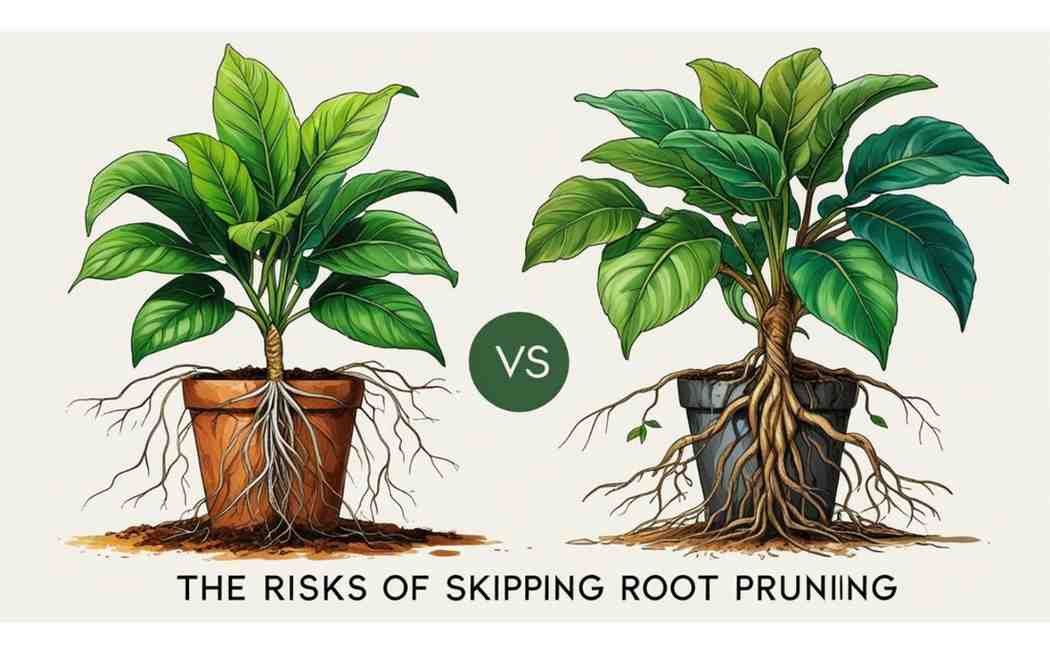
What happens if you skip root pruning? Honestly, a lot can go wrong. Trees fall—literally. Weakened root systems can’t hold up in storms. Or even light wind sometimes. Then there’s the legal stuff. If your neighbour’s tree dies because of your excavation? You could be paying for a new mature tree. Or worse, damages. And it’s not just the tree. Your new foundation could shift. Pipes could snap. Cracks appear where they shouldn’t. Trees don’t forgive haphazard construction. Root pruning is like asking for permission before breaking ground. Skip it, and you’re gambling with nature—and liability.
Real-Life Story: The Oak That Refused to Die

Here’s a tale. A developer wanted to build a garage just five feet from a 90-year-old oak. The city required root pruning, but he figured it was red tape. So he ignored it. Fast forward six months—the tree lost 40% of its canopy. A year later, it was dead. The city fined him. The neighbour sued him (the tree was on a shared lot line). Then came the kicker: his garage foundation cracked, costing him $30k in repairs. All that, just to skip root pruning. You’d think trees are silent—but they scream back. Especially when wronged.
How Root Pruning Helps Trees, Not Hurts Them
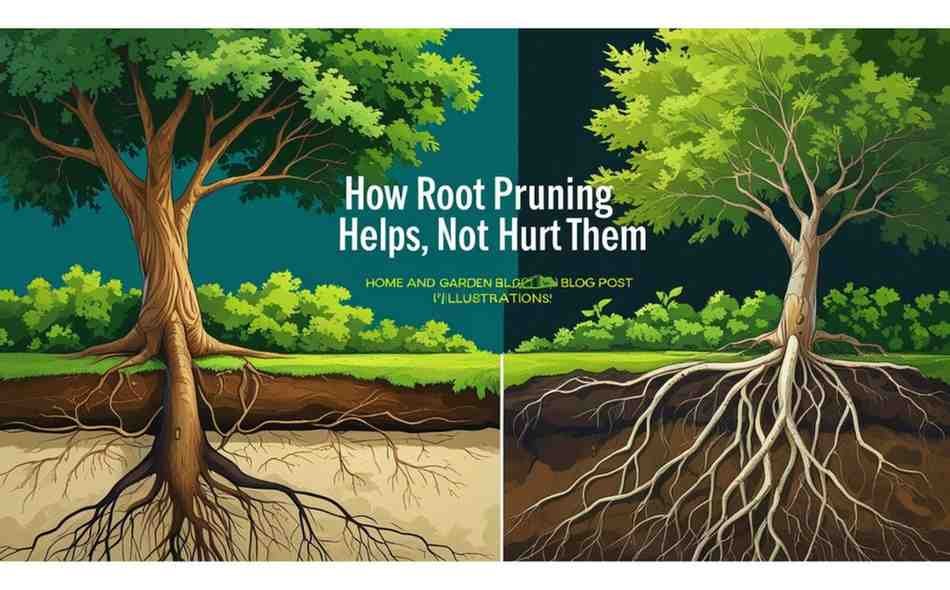
This surprises most folks. Root pruning isn’t tree cruelty—it’s preservation. When done right, it gives trees a fighting chance during nearby construction. You’re prepping the tree, helping it reallocate resources, and recover safely. It’s the difference between trauma and preparation. Think of it like training for a marathon. You don’t just show up and run. You condition. Root pruning is that conditioning. Sure, there’s stress involved. But controlled stress is better than sudden, uncontrolled damage. Trees appreciate the heads-up. They know how to survive. They just need a little help.
Construction and Tree Protection Zones
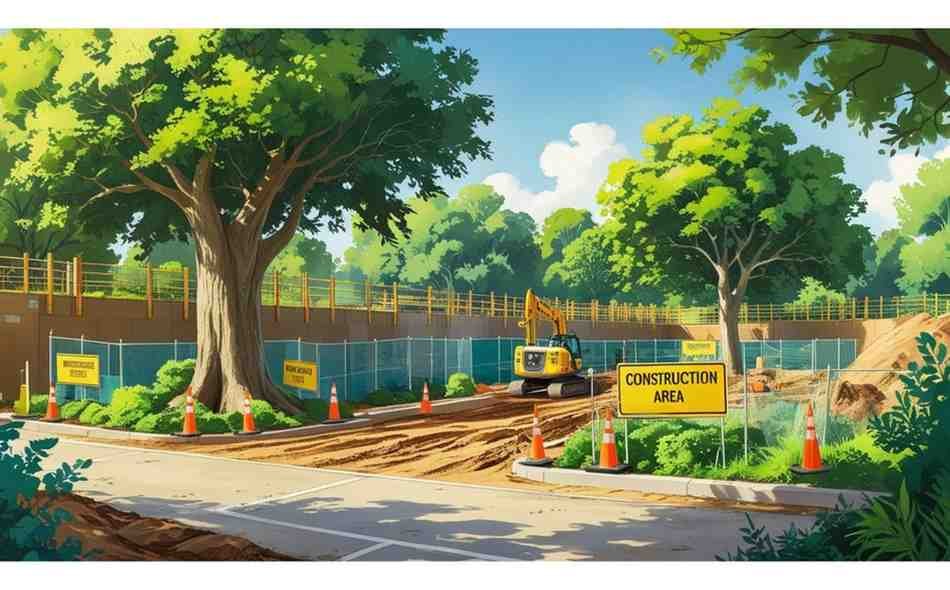
Ever heard of a TPZ? That’s Tree Protection Zone. It’s the holy ground around a tree’s base. Root pruning helps define that zone. Within it, no machinery. No dumping. No digging. Nothing that compacts soil or severs roots. TPZs vary by tree species and size but typically extend out to the tree’s drip line. Root pruning marks the boundary. Like drawing a line in the sand. Cross it without care, and you’re messing with the tree’s lifeline. Respecting that zone isn’t just polite—it’s professional. And rooted (pun intended) in good construction ethics.
Soil and Water After Root Pruning

Here’s something folks forget: after root pruning, the tree needs a recovery plan. That includes healthy soil and water access. Compacted dirt suffocates roots. So does poor drainage. Mulch helps—but not too close to the trunk. And irrigation? Crucial. But not drowning. Just consistent moisture. Think of it like post-op care. You don’t just send a patient home and hope for the best. You nurture healing. Root pruning starts the process. But what comes after matters even more. Want your tree to thrive next to your new garage or addition? Treat the soil like gold.
Which Trees Handle Root Pruning Best?
Not all trees are built the same. Some bounce back like champs. Others? Total drama queens. Oaks, elms, and pines tend to handle root pruning fairly well—if it’s minimal and timed right. Maples and willows? Super sensitive. They hate root interference. Younger trees adjust better than mature ones. But ironically, mature trees are usually the ones worth saving. So it’s a balancing act. Before you prune anything, know your species. And remember: even “tough” trees don’t enjoy having their feet messed with. It’s all about what’s reasonable, not what’s possible.
The Environmental Payoff of Root Pruning

Root pruning doesn’t just save one tree. It protects entire ecosystems. Every mature tree’s shade cools and feeds many organisms. You can disrupt an entire web by destroying one single tree. Save it through root pruning? You preserve decades of natural balance. Birds stay. Insects thrive. Air stays clean. People even feel better—literally. Urban greenery reduces stress. So root pruning isn’t a construction hassle. It’s environmental maintenance. It’s about saying “yes” to progress without saying “no” to nature. Trees deserve a seat at the table. They’ve been around longer than us, after all.
Cost of Root Pruning: Is It Worth It?
Let’s talk numbers. The cost of root pruning varies from $300 to $1,000 depending on the size and complexity of the tree, as well as soil conditions. Sounds like a lot? Wait until you see the bill for replacing a dead mature tree—anywhere from $5,000 to $20,000. Plus, foundation repairs. Legal issues. Insurance drama. Compared to all that, root pruning is a bargain. Think of it like health insurance for your tree—and your property. It’s proactive. Not reactive. And in construction, that’s everything. You don’t save money by skipping corners. You save money by planning smart—and pruning roots right.
Who Should Perform Root Pruning?
This ain’t a job for your cousin with a shovel. Root pruning needs professionals. Certified arborists are trained to understand trees from the inside out—including their underground world. These folks know where to cut, when to cut, and what not to touch. Many construction teams hire arborists as consultants before breaking ground. That’s not overkill—it’s smart. They assess the site, mark root zones, and oversee the process. If your builder says, “Don’t worry, we got this,” without an arborist involved? Worry. Trees are too complex for guesswork. They need skilled hands and informed decisions.
Mechanical vs. Manual Root Pruning

You’ve got options. Trenchers and saw blades are used for mechanical root pruning. They’re fast, effective, but can be dangerous if not controlled. Hand-pruning with pruners and shovels is much slower. Safer for sensitive roots. So which one should you choose? Depends. Big job? Mechanical might work with oversight. Smaller space or delicate species? Manual all the way. Some even combine both methods—machine first, hand-finish second. Either way, technique matters more than speed. Don’t let anyone rush it. Tree roots aren’t spaghetti. Cut clean. Cut smart. Let the root pruning process take the time it needs.
Root Pruning & Construction Sequencing
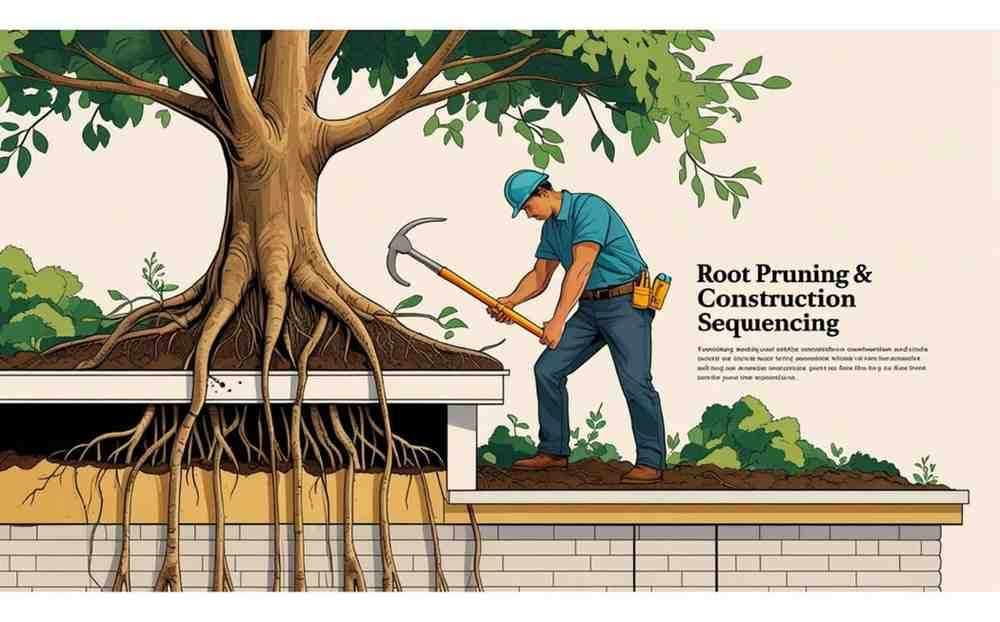
Root pruning isn’t a one-time task—it’s a phase. It should happen before excavation, before grading, and definitely before any slab gets poured. Why? Because once heavy equipment rolls in, roots are already at risk. The soil compacts, roots suffocate, and water can’t flow. So make root pruning the first guest to arrive at your construction party. Not the last-minute invite. Plan for it in your construction timeline. Tell your contractor early. Let the arborist mark their turf. It’s not just about safety. It’s about respecting the process. Your house needs a foundation. So does the tree.
Common Root Pruning Mistakes

People mess this up a lot. They prune too close to the trunk. Or too far from the construction zone. Some just hack with shovels, leaving jagged cuts. Others prune during a drought. Worst? Pruning and digging at the same time—chaos. So here’s what not to do: Don’t guess. Don’t improvise. Don’t ignore species. Don’t trench in the heat of summer. And never, ever forget post-care. Root pruning is delicate. It requires timing, knowledge, and follow-through. Skip any of that and you risk losing both tree and time. The biggest mistake? Treating root pruning like an afterthought.
Root Barriers: Friends or Foes?

Once you’ve pruned roots, sometimes root barriers come next. These are physical membranes placed in the soil to keep roots from wandering back under your new driveway or slab. Sounds smart, right? They can be—if used right. But they can also starve a tree if installed too close. Barriers should only block aggressive roots, not the whole system. And they must allow water movement, or you’re creating a dry trench. Use root barriers only when advised by an arborist. Otherwise, you’re just adding plastic to dirt and hoping for the best.
Urban Development & Tree Coexistence

Cities grow. Fast. But trees? They’ve been here. Before streets, before homes, before sidewalks. Root pruning is a bridge between these two timelines. This allows the old trees to remain rooted as new buildings rise. Nature doesn’t have to be erased by urban development. It can blend with it. But that takes planning. Root pruning isn’t just for single homes—it’s vital in city planning, parks, commercial builds, and even roadwork. When you prune roots the right way, you’re saying “yes” to smart growth. That’s the future of construction: sustainable, thoughtful, and deeply rooted—literally.
Post-Construction Tree Monitoring
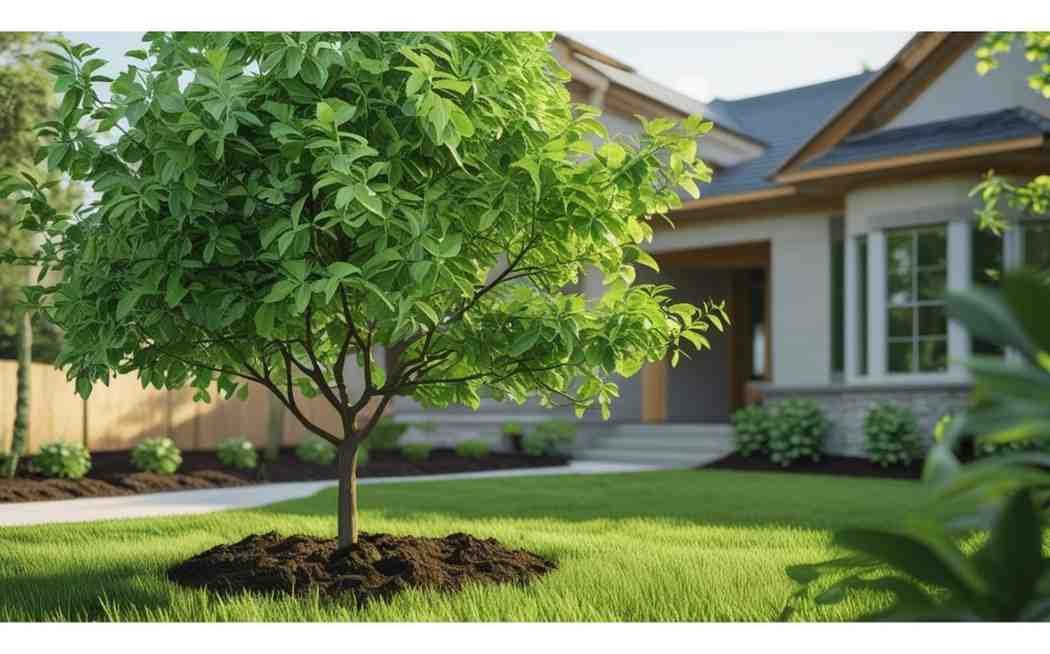
Done pruning? House built? Not so fast. The tree’s journey isn’t over. After root pruning and construction, it needs monitoring. Look for canopy dieback and yellowing leaves. It is important to water it, mulch it, and check for any stress. Trees don’t bounce back overnight. Sometimes it takes years to fully recover. Some may even die despite best efforts—but at least you tried. Root pruning is about increasing odds, not guaranteeing success. Follow up with arborist check-ins. Think of it as your tree’s wellness plan. New home, old tree—both need care.
When Not to Root Prune
Yes, there are times to hold off. Mid-summer heatwaves? Nope. Right before a major storm season? Risky. Sick trees, stressed trees, or those with pest issues? Not ideal candidates. Also, if your tree is very young, root pruning may do more harm than good. The same goes for ancient, brittle trees that are already in decline. So sometimes, the best root pruning decision is to wait. Or skip. Or consult a pro and do alternative mitigation. Root pruning isn’t universal. It’s situational. And context is everything. Know when to act—and when to step back.
Landscaping After Root Pruning

Once root pruning is done and the structure’s up, the area around the tree becomes prime real estate again. But don’t just start planting shrubs and pouring patios. That tree’s still healing. Keep mulch loose and thin, avoid heavy landscape fabric, and stay off the root zone with tools or equipment. If you must plant, go for shallow—ground covers, not deep-rooted plants. Root pruning disturbs a delicate balance. And the best way to honour that is patience. Let the tree show signs of recovery before landscaping with abandon. You built your dream home. Let the tree keep living its story, too.
Legal Side of Root Pruning

One last curveball—laws. Yup, trees are often legally protected. Especially heritage trees or those on public land. Root pruning without permits? That could get you fined. Or worse, forced to halt your project. Municipalities may require documentation, arborist sign-offs, or specific techniques. Even on private land, trees can be part of neighbour hood covenants. Always check. Don’t assume. Because one wrong cut could turn into a legal mess. Root pruning is as much about paperwork as it is about pruning. Cross your t’s. Cut your roots. But only the right ones—and legally.
Final Thoughts: It’s All About Respect
Root pruning isn’t glamorous. It’s dirty. It’s quiet. It happens before the noise begins. But it’s the heartbeat of responsible building. You’re not just making space for a foundation. You’re making space for harmony between what grows and what gets built. That takes respect. Planning. And a little humility. Trees have been growing roots for centuries without our permission. The least we can do is prune with care. Root pruning for construction is one of those rare things—equal parts science, strategy, and soul. And if you ask me? Worth the effort.

